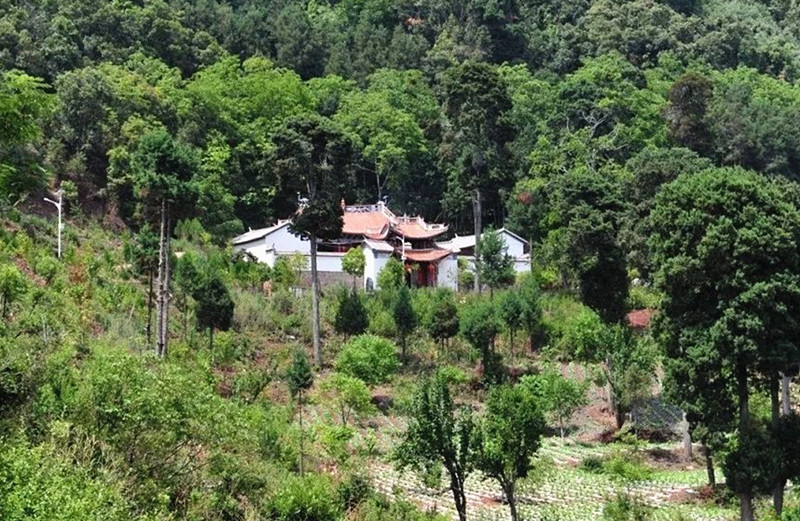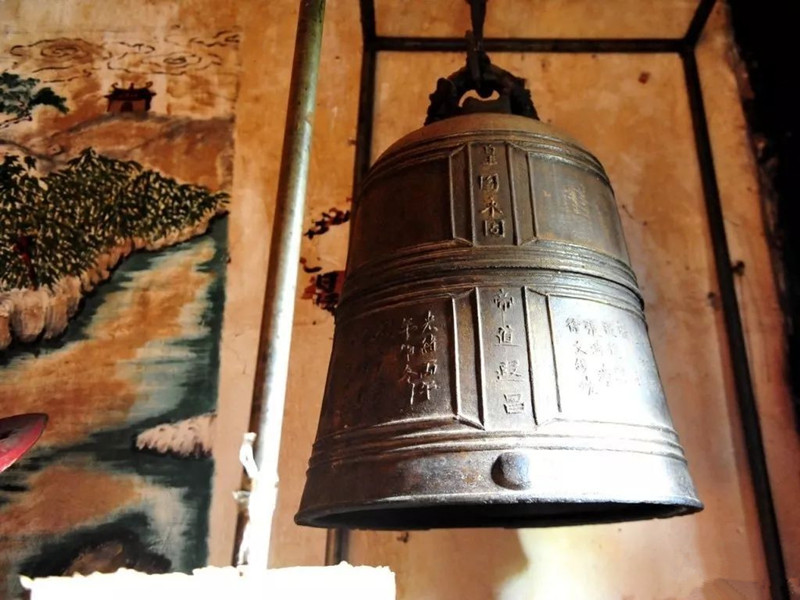
Baiyun Temple in Nanjian County, Dali
Overview
Baiyun Temple (白云寺) is a renowned ancient temple located in Nanjian County (南涧县). It is one of the well-preserved ancient temples in the area and is designated as a provincial cultural relic protection unit.
Location and Environment
Baiyun Temple is situated on a natural terrace at the foot of a mountain in Dapingdi Village (大平地村), Baiyun Village Committee (白云村委会), northwest of Nanjian Town (南涧镇), approximately 23 kilometers from the county seat. The temple is nestled amidst majestic mountains and enjoys an elevation of 1,620 meters. Surrounded by clear waters and beautiful scenery, it is often shrouded in white clouds and purple mist, which gives it its name.
Historical Background
The temple was first established in the 29th year of the Jiajing reign (公元1550) of the Ming Dynasty. Under the guidance of the high monk Wutong (悟通和尚) of Taijiding Bamboo Sweep Temple (太极顶竹扫寺), construction began. The architectural design is a traditional wooden structure with three levels and two courtyards, including the main hall, side halls, and other significant buildings.
During the Kangxi reign (1662–1721) of the Qing Dynasty, Baiyun Temple underwent renovations. Nine Buddhist and divine statues were cast in a copper-lead alloy. The main hall was adorned with three lattice doors, each featuring intricate designs, such as “Hundred Birds Paying Homage to the Phoenix” (百鸟朝凤) and “Phoenix Pecks the Peony” (凤啄牡丹). Major repairs were also conducted during the Jiaqing reign (1801–1810). Since the founding of the People’s Republic of China, the temple has seen five renovation projects, and a new Caishen Hall (财神殿) was built about 50 meters to the right of the main temple in November 2009.
Current Condition
Baiyun Temple has a history of over 470 years. It houses ancient relics such as stone tablets, ancient bells, drums, and plaques from the Qing Dynasty. The temple currently consists of seven wooden structures, divided into front, rear, left, and right halls, each housing various Buddhist statues. An ancient bell, cast during the Guangxu reign of the Qing Dynasty, remains well-preserved and is considered a treasure. The architectural details, including bracket sets, painted beams, horizontal plaques, and stone carvings, are meticulously arranged, showcasing elegance and charm.
The surroundings of the temple are adorned with ancient cypress and towering pines, complemented by an orchard of over 30 acres. In spring, the area is filled with the sounds of birds and blooming flowers, while in autumn, it bears abundant fruit. Visitors are often enchanted by the beauty described in the verse: “In the purple bamboo forest, one gazes at the wondrous images; in the depths of the white clouds, one finds the kunlu,” (紫竹林中瞻妙相,白云深处现琨垆) capturing the essence of this picturesque landscape.
Cultural Significance
The ancient temple, exquisite murals, rising incense, and a century-old walnut tree that can be embraced by several people make Baiyun Temple feel like a long-lost history book, inviting visitors to savor its richness. The gentle breeze makes the flower-protecting bells ring softly, while birds sing joyfully. A mural on the wall depicts a fierce tiger that seems to gaze intently at onlookers, as if judging the goodness or evil of humanity.
Following the winding path up the mountain, visitors can find homes even in the depths of the white clouds. This is reminiscent of the famous poem “Mountain Travel” by Du Mu (杜牧) from the Tang Dynasty: “The stone path leads up the cold mountain, where white clouds hide a human home. I stop to admire the maple forest at dusk, where frost leaves are redder than flowers in February.” (远上寒山石径斜,白云深处有人家。停车坐爱枫林晚,霜叶红于二月花) Whether the great poet Du Mu ever visited Baiyun Village (白云村) remains a mystery, but the beauty of autumn here mirrors the poem’s imagery, attracting many admirers.
Flora and Fauna
The cultural scenery, alongside the vibrant blossoms of spring, summer, autumn, and winter, makes entering Baiyun Temple feel like stepping into a garden of perpetual blooms. Notably, an ancient magnolia tree stands tall, symbolizing: “In Baiyun Ancient Temple, the ancient magnolia shines like jade in summer and becomes frost in winter.” (白云古寺古玉兰,夏如碧玉冬成霜) This tree complements the ancient temple, enhancing its beauty.
Present-Day Baiyun Temple
Today, Baiyun Temple features neatly arranged horizontal plaques, murals, stone carvings, and wooden sculptures. Ancient trees tower above, and fruit trees abound. Enveloped in swirling white clouds and shaded by ancient trees, the temple offers a peaceful escape from the hustle and bustle of urban life. The enchanting Baiyun Temple has become a favored destination for tourists seeking tranquility and historical exploration.
How to Get There
By Bus
- From Dali City (大理市): Take a bus to Nanjian County. The journey takes approximately 1.5 to 2 hours.
- From Nanjian County: You can take a local taxi or hire a motorcycle taxi to reach Baiyun Temple, which is about 23 kilometers away.
By Car
If you prefer driving, you can rent a car in Dali. The distance from Dali City to Baiyun Temple is about 60 kilometers, taking around 1-1.5 hours. Follow the signs to Nanjian County and then to Baiyun Village.
Travel Tips
- Best Time to Visit: Spring and autumn are the ideal seasons due to pleasant weather and stunning scenery.
- Cultural Etiquette: Respect local customs and the sacredness of the temple.
- Photography: Capture the unique beauty of the temple and its surroundings, especially during sunrise or sunset for the best lighting.
- Wear Comfortable Shoes: Prepare for some walking on uneven paths as you explore the area.
- Local Cuisine: Don’t miss the opportunity to try local dishes available in nearby villages.






















